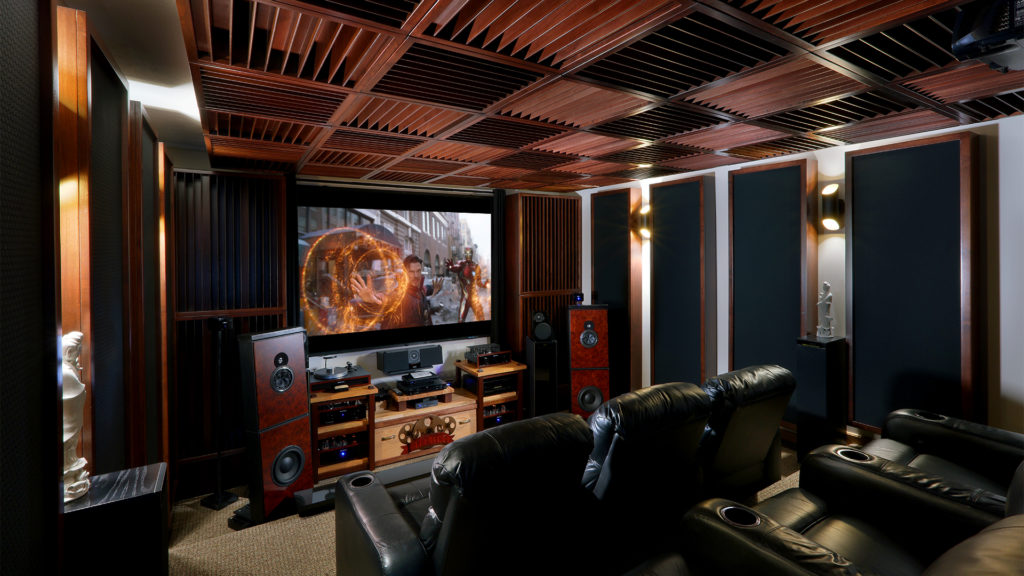
The three word bass trap foam does not go together. A bass trap will never and can never be built out of foam. There is no such thing as a bass trap foam. Foam is not a low-frequency technology and “bass” is a low-frequency issue. Foam is a limp mass technology designed to absorb middle and high frequencies only.You must match the treatment type and amount to the energy type you are trying to treat. There are two kinds of energy that we deal with in small room acoustics. We have waves of energy that are low frequency issues. We have rays of energy that represent the middle and high frequencies such as music and voice. Waves of low frequency energy act like ocean waves. They are large and oscillate throughout our rooms in predetermined distances and speeds. They are everywhere in our rooms. They are all about pressure and fill our rooms with energy that our room dimensions can not support. When this improper fit results, we have room modes. Room modes can exaggerate or completely suppress certain frequencies where you will hear too much of something and not enough of other sounds. Room modes occur between two parallel walls, four parallel walls, and the floor to ceiling. http://artsites.ucsc.edu/ems/music/tech_background/TE-02/modes/Modes.html

Our next frontier to concur is the middle and high frequency reflections from the wall surface areas. Reflections from these surface areas produce reverberation. Reverberation is defined as how long a sound stays around within the room after it has been spoken or sung. https://www.merriam-webster.com/dictionary/reverberation High reverberation times have an impact on understanding dialog in a home theater or with two channel listening rooms they can impact definition and resolution of our electronics. The best room is no room at all but we must inhabit rooms in order to protect ourselves from the elements. The walls, floor, and ceilings of our rooms produce room modal issues and high reverberation times that must be managed using the proper rate and level of absorption to treat the specific frequency response issues. You must use the proper type, amount, and position the treatment in the correct place within the room to obtain the best results.

Low-frequency management has three main types. We have Helmholtz, membrane, and diaphragmatic. Helmholtz is frequency specific and you need many units. Membrane is the cousin to the more powerful diaphragmatic absorption. The most powerful technology to use for low-frequency absorption is diaphragmatic. This is the technology we use at Acoustic Fields. A diaphragmatic absorber works with sound pressure. When a pressure wave strikes the diaphragmatic absorber it is slowed down by the dual front walls which are designed to be out of phase with each other to perform better. Once the low-frequency pressure wave is slowed down it will enter the inside of the cabinet where our carbon technology is. The carbon which weighs in at 65 lbs / unit, produces a lower atmospheric pressure inside the cabinet. The pressure wave sees this area of lower pressure and collapses since the pressure inside the cabinet is less than the pressure the wave was created in. There is no bass trap foam with this technology. We do place our foam technology on the face of each unit so the units absorb from 30 Hz. – 6,300 Hz. which is the frequency range that mix engineers work within. You must use the same rate and level as the engineers use to mix the music. https://www.acousticfields.com/product/acda-10-activated-carbon-diaphragmatic-absorber/

When it comes to treating low-frequency pressure issues within a room, we must treat all four walls to have the proper impact on the low-frequency response curve of our room. Treating the four walls with the proper amount of treatment that has the correct rate and level of absorption will go a long way to resolving our room modal issues. Room modes can exaggerate certain sounds and completely eliminate others. Their unwanted pressure issues must be treated so we can have the resolution and definition our electronics of today are capable of producing. The four walls produce room modes from side to side and from front to rear. The floor to ceiling dimension also creates modal issues. The floor to ceiling dimension in most small rooms is the shortest dimension of the three and produces issues in the 70 – 90 Hz. range. We have two options for treatment. We can treat the floor or we can treat the ceiling. If the issues are bad enough, we must treat both surface areas for maximum effectiveness https://www.acousticfields.com/product/floor-platform/

Once you have the low, middle, and high frequencies managed correctly using the proper type, amount, and positioning of the technologies, you can then look towards diffusion. Diffusion is a technology to make a small room sound larger. Diffusion is a wonderful technology and once experienced and used, it will never be forgotten. Placing diffusion in small rooms requires that you pay special attention to the distances from the walls and the listening position. Diffusers have a frequency response just like a speaker and amplifier. You must respect the distances from the diffuser to the listening position in order to maximize the performance of the diffuser. The frequencies that come out of a diffuser must have enough distance to completely form or you will get phase issues. In a two channel system, we recommend diffusion on the front and rear walls. in theaters, we use diffusion on the ceiling and rear wall. https://www.acousticfields.com/product/sounddiffuser-acousticdiffuser-qd13/







